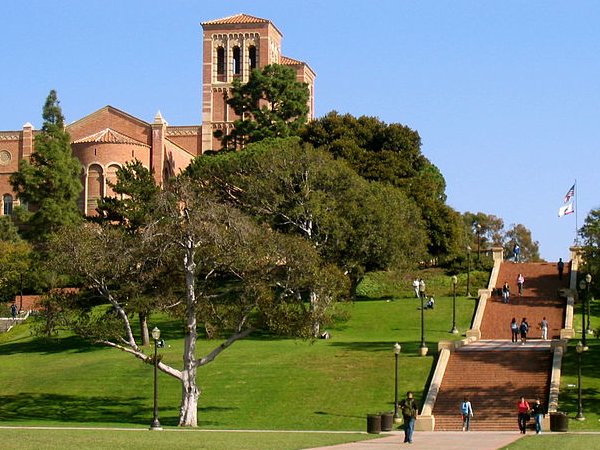In the penultimate essay of this series, I discussed at length an internal report at UCLA that examined the university’s admissions decisions. The report, written by UCLA sociology professor Robert Mare, found evidence that UCLA had given preference to black students in its new “holistic” admissions process in 2007 and 2008, despite the prohibitions of California’s Proposition 209.
For instance, one part of the report estimated that slightly more than 33% of the black freshmen admitted to UCLA’s 2008 freshmen class would not have been admitted if they had not received preferences.
Despite that evidence, on the day that UCLA released the report, the university posted on its web site a press release claiming that Mare’s report “found no evidence of bias in UCLA’s admissions process.”
The latter statement is false. And I believe the cause of that falsehood is what I call “institutional dishonesty.”
Specifically, as I detail more fully in my book, through euphemisms, strategic omissions, and editorial error, UCLA turned a true statement–that Mare’s report found evidence of racial bias–into its opposite.
The error seems to have begun with Mare himself. Although he was completely honest in his statistical analyses, he spun his verbal descriptions of those analyses in minor ways to make UCLA look less bad. Most important, instead of calling his results “estimates of racial bias” or “estimates of racial preferences,” he called such estimates “disparities.”
For instance, as I mentioned above, one aspect of his analysis estimated that, absent racial preferences, slightly more than 33% of black freshmen admitted in 2007 would not have been admitted. Here is the prose that Mare used to describe that estimate: “Absent the adjusted disparities estimated in this analysis, 121 fewer Black applicants would have been admitted, which amounts to more than 33 percent of the actual number admitted.”
Compounding the confusion, at approximately the same time that UCLA released the Mare report, a faculty committee released a summary of the report. The official title of the committee is the Committee on Undergraduate Admissions and Relations with Schools (CUARS).
The CUARS summary of the Mare report contains five paragraphs. The fourth and fifth are little more than boilerplate. The first three paragraphs, however, are more substantive. They summarize Mare’s report–except they cherry-pick from Mare’s conclusions.
Specifically, the “executive summary” of Mare’s report contains nine bullet points. Three mention, albeit in cryptic ways, that Mare’s statistical analysis found evidence of racial bias.
Yet the CUARS statement focuses only on three other bullet points, in which Mare explains that–despite the fact that the holistic system judged applicants partly by challenges and hardships they faced–the most important factors in UCLA’s admission system were ones of academic achievement, such as like grades and SAT scores.
While Mare found significant evidence of racial bias, the CUARS statement did not mention that fact.
Moreover, in Mare’s executive summary, just after the nine bullet points, he wrote the following sentence: “The holistic ranking process for Freshman admissions at UCLA appears to work much as intended.”
Here, however, is the way the CUARS committee rewrote the sentence: “Professor Mare concludes that the Comprehensive Review ranking for UCLA freshman admissions functions in the manner intended by the faculty and the University.”
Note that the committee removed the word “much” from Mare’s conclusion.
Then, on the same day that CUARS released its statement, UCLA posted its press release, entitled, “Independent report confirms UCLA admissions process working as intended by faculty.”
Like the CUARS statement, the press release removed the word “much” from the actual conclusion that Mare wrote. As I discuss above, the press release also claimed: “Mare’s report found no evidence of bias in UCLA’s admissions process.”
The author of the press release seems to have relied heavily on the incorrect CUARS statement–perhaps merely through an editorial oversight.
Note that through a series steps, none of which can definitively be called a lie, UCLA staff and faculty distorted a true statement into its exact opposite.
Remember, the distortion was the product of a highly esteemed university that, in theory, is one of society’s guardians of truth.
Photo: Wikimedia Commons
Read all 13 parts of the series:
- Part 1: Has UCLA Found A Way to Use Race in Admissions?
- Part 2: Did UCLA Change Admission Process to Aid Minorities?
- Part 3: Race- Versus Class-based Preferences in UCLA Admissions
- Part 4: UCLA and Race in Admissions: Avoiding the Evidence
- Part 5: Richard Sander: Standing up to Deceit in University Admissions
- Part 6: Why Sander is Fighting a Deceitful Admissions System
- Part 7: Resigning from UCLA Admissions–and UCLA’s Response
- Part 8: Winning the Battle for Data on UCLA Admissions
- Part 9: Why There are Too Few ‘Black Bruins’
- Part 10: Second-Chance Reviews, Not ‘Holistic’ System, Lifted UCLA’s Black Admissions
- Part 11: How to Admit 354 Black Students Using Class-Based Preferences Alone
- Part 12: How Mare’s Study Suggested Race Played Role in UCLA Admissions
- Part 13: How UCLA Cleared Itself of Using Race in Admissions

COMMENTS
Please let us know if you're having issues with commenting.